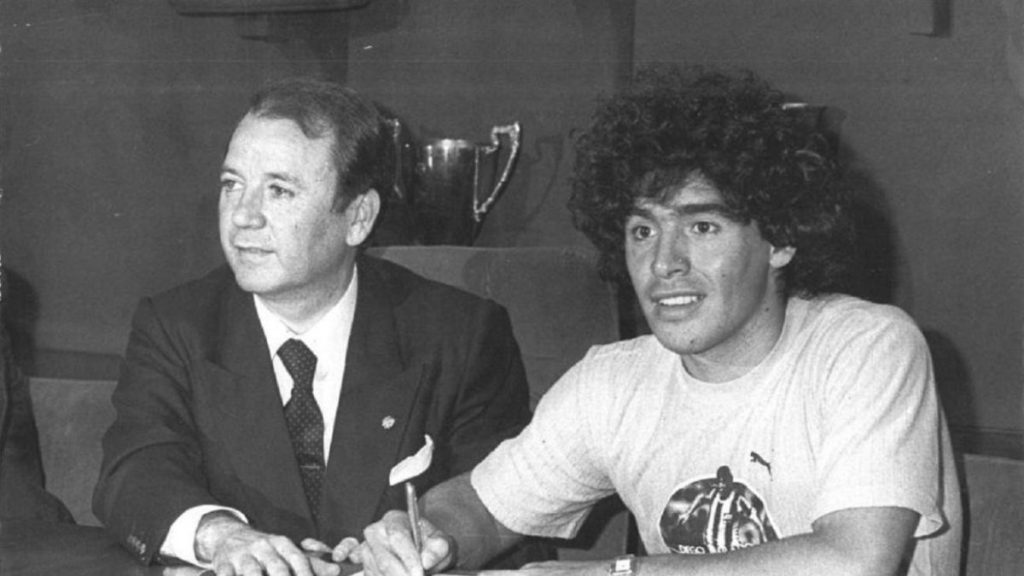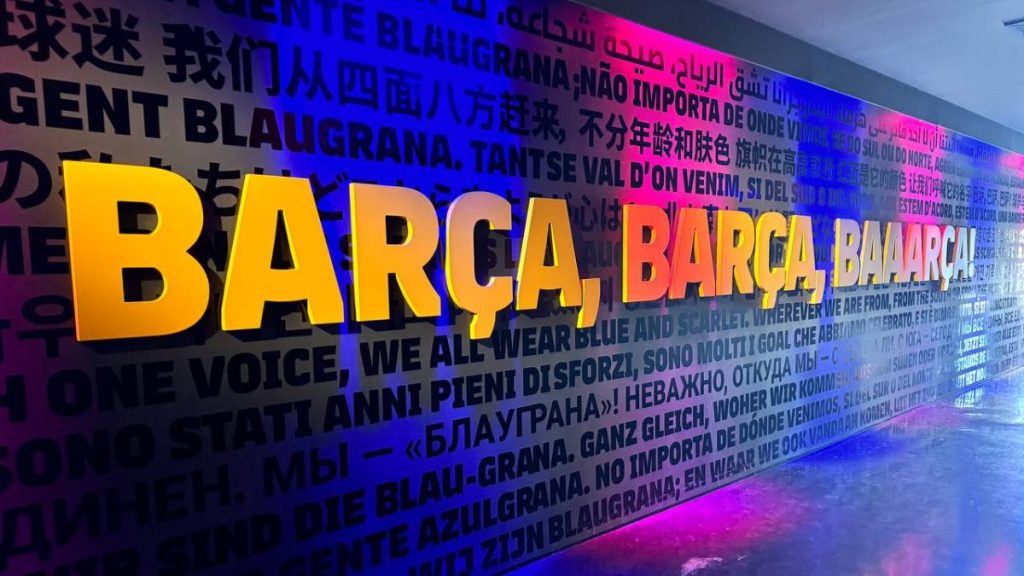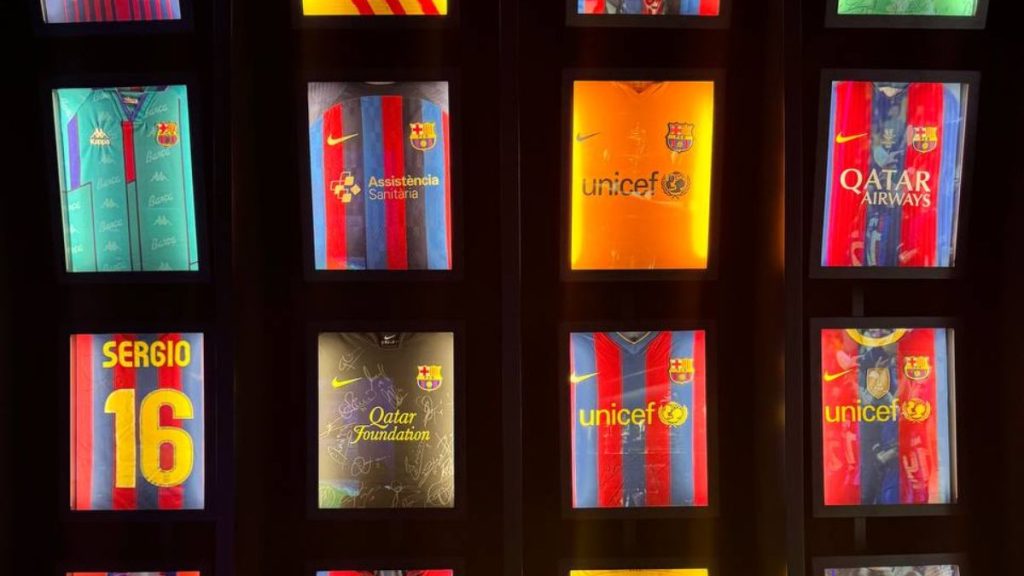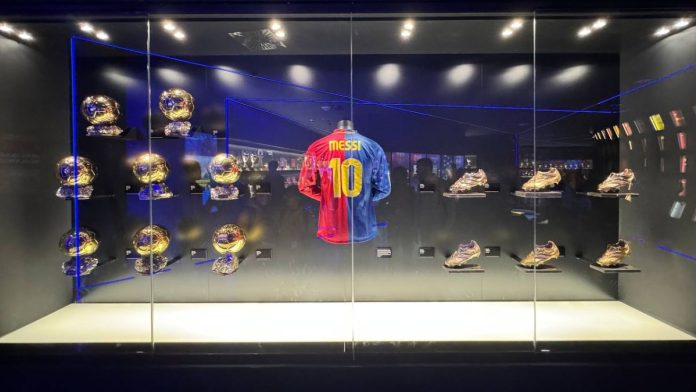One of the best clubs in the world, FC Barcelona prides itself on its history, one that they display at their FC Barcelona Museum…and profit from it immensely!
There are only a handful of clubs with as rich a history as FC Barcelona. The Catalan giants have gone toe to toe with Real Madrid on almost all fronts, barring the European one, in hogging all the glory of Spanish football, creating memorable moments in football’s collective memory, and leaving their outstanding imprint on football as a whole.
The club recognizes that rich history and has never shied away from benefiting from it. Far from it even, since they have actively used that rich history to generate the funds needed to expand Barcelona’s reach even further. And what better way to benefit from history than opening a museum?
FC Barcelona’s Museum, inaugurated in 1984, is located in one of the world’s top tourist destinations. This is obviously ideal for the club as the museum not only draws millions of Barcelona fans but is also a place for any tourist visiting the city of Barcelona.
From Diego Maradona’s jersey to Ronald Koeman’s boots, the FC Barcelona museum houses a host of priceless football memorabilia. But the museum also has a private collection of works from legendary local artists like Dali and Tapies, enhancing the reputation of the establishment among art lovers as well. But let’s delve a bit deeper into FC Barcelona’s infamous museum, its history, and its mission.
FC Barcelona Museum – History

The idea of a museum depicting Barcelona’s history, among many other innovations that saw the club become a household name in football, came from Barca’s beloved president José Luis Núñez Clemente.
The Basque-born president had no prior connection to the club but became its 35th president, ushering in a new era of success for the club. Under Nunez’s presidency from 1978 to 2000, FC Barcelona saw the Cruyff years and the Dream Team and was able to compete with the European elite. Essentially, Nunez made Barcelona the powerhouse it is today.
Alongside the club and the La Masia academy flourishing under Nunez’s presidency, he made some foundational changes to the club, introducing the FC Barcelona Musem in 1987. The museum would be renamed after Nunez in 2000 as Joan Gaspart took over the role of president from him. Nunez’s time as Barcelona’s president merits a whole article or even a book, but suffice it to say that his idea of opening a museum dedicated to Barcelona’s history was in line with the club’s need for capital. As a tourist destination for millions every year, Barcelona stands to gain a lot from showcasing its history in a museum.
But the FC Barcelona museum wasn’t always as prominent as it is today, especially in the years after Nunez. Under Joan Laporta’s first presidency of the club, the museum went under reconstruction, which reopened in 2010. But what did that reconstruction entail?
FC Barcelona Museum’s Structure

The reconstruction of the museum in 2010 saw the museum be split into three parts: The historic museum section, the private art collection, and the Futbolart Collection.
It’s important to note that the FC Barcelona Museum is only accessible by booking the Camp Nou Experience, which includes the tour of the stadium as well as the museum. The tour includes an audiovisual touch-screen, a 3D cinema, and a collection of historical FC Barcelona info. But what do these three sections include?
Three parts of the FC Barcelona Museum tour

The tour itself is 19 euros right now and it contains an audiovisual guide in multiple languages throughout the experience. Visitors can experience the ‘We Are History’ tunnel, depicting the club’s glorious past with audiovisual touchscreens and a helpful guide. The first section of the museum has an interactive glass wall for visitors as well as photos, trophies, and paraphernalia about the club’s immense history. Fans could watch videos and find information about the club’s various historical moments or figures by touching the glass wall and the information will be displayed either in audio, video, or text and image format on the wall.
They can then visit the club’s own art gallery in the second section. The art gallery has some of the best works of local artists like Salvatore Dali, Joan Miro, and Antoni Tapies for visitors to admire. This is perhaps the most ingenious part of the museum since it’ll compel any art enthusiast to visit the museum only to get a glimpse of a unique Salvatore Dali or Joan Miro piece.
The third and final part of the FC Barcelona museum is the Futbolart Collection, where various pieces of football memorabilia are displayed as well as the club’s gargantuan trophy cabinet, showcasing all the glory of the Catalan giants.
Among the items showcased in this section, Diego Maradona’s number 10 Barcelona Jersey and a 1958 Inter-Cities final ball can be found. However, Ronald Koeman’s Adidas boots, in which he scored the 1992 European Cup winning goal, is the star of the show.
The Financial Gains of the Museum

The city of Barcelona is full of museums and art galleries, garnering millions of tourists each year, and yet the FC Barcelona museum frequently vies to be the most visited museum in the city. This is a huge accomplishment in itself but, Barcelona has found a way to capitalize on that, tying it to the Camp Nou Stadium Tour and hugely benefitting from it.
The club’s official report from 2020 reported that a sum of €212m was their total income from the Camp Nou, including the FC Barcelona Museum and stadium tours. Of that sum €159.2 M belonged to the Matchday revenue, leaving the rest of the 50 million euros the income from the museum and stadium tours, which is almost as much as a big club like Dortmund made on their ticket sales that season.
In fact, FC Barcelona reported that at the end of the 2022/23 season, FC Barcelona Museum made a profit of €42 million, despite being closed down until late May!
With an average of 1.2 million visitors each year, the FC Barcelona Museum advertises the ‘Barcelona Experience’ among so many tourists that it has become a reliable source of income for the financially challenged club.
However, it did help that a superstar like Lionel Messi played for Barcelona during the bulk of the years that the FC Barcelona Museum have been successful. The immense success of the Messi years has helped grow the club’s fandom to record highs and as a result the interest in any facet of the club, including its museum, has risen.
The question now remains, will Barcelona be able to maintain such an interest in tourists to visit their museum, or will that side of the club go in decline as they have on the pitch!?

